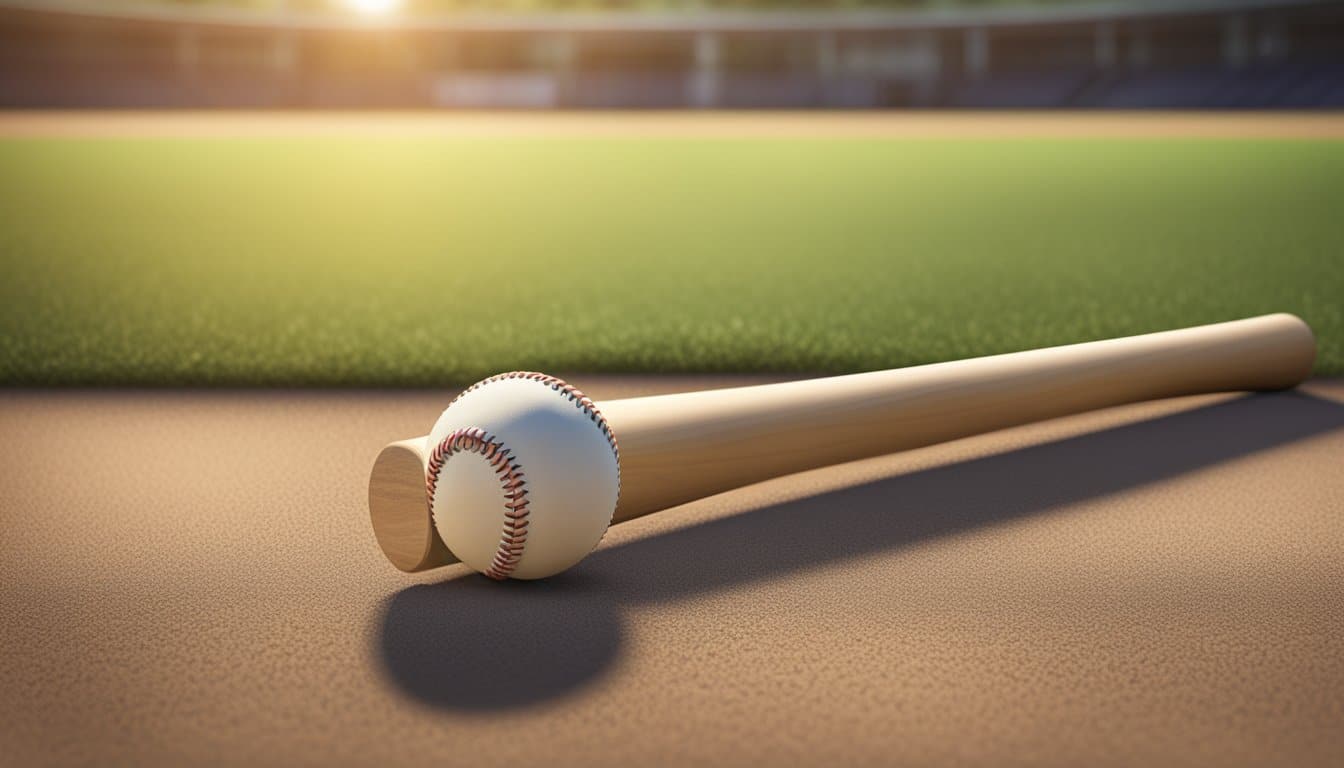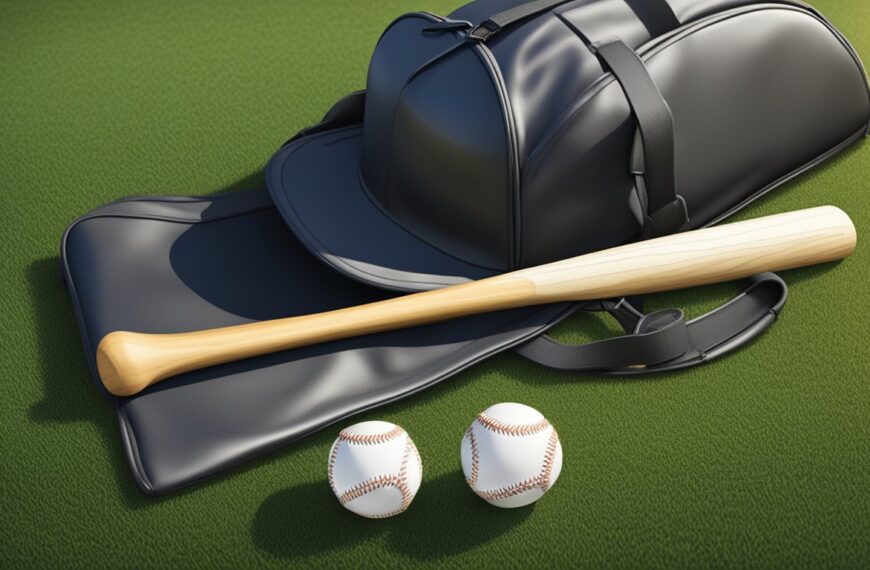In the world of baseball, mastery at the plate begins far from the raucous cheers of crowded stadiums; it takes root in the quiet hours of diligent practice, often with nothing but the company of a batting tee. This rudimentary tool allows hitters to refine their swings and reinforce proper mechanics in a controlled setting. However, establishing prowess with a stationary ball is just the starting point. The true challenge for any player is transferring those refined skills from the simplicity of tee work to the dynamic environment of the field, where the unpredictable nature of a live pitch awaits.
The transition from tee practice to live hitting involves more than just physical adaptability; it also requires mental acuity and strategic insights. The solitary nature of tee work allows players to focus intently on their individual mechanics, but stepping into the batter’s box against a pitcher demands rapid decision-making and adjustment to a multitude of variables. To ensure this progression is successful, hitters must consider the differing conditions they will face, including the type of pitch and the game situation, all while maintaining the fundamentals honed during tee training. Equipment too plays a pivotal role, as the bat that feels right in practice must also deliver results when the game is on the line.
Key Takeaways
- Batting tee practice is foundational for mastering hitting mechanics before facing live pitching.
- Successful transition from tee to field requires mental preparation and strategic adaptation.
- Hitters must match their equipment choices with the authentic demands of live game situations.
Understanding the Basics
Developing a consistent and powerful swing in baseball begins away from the live pitch environment. Mastering the essentials on a batting tee provides a controlled setting to hone one’s swing mechanics and muscle memory.
Anatomy of a Proper Swing
A proper swing is a combination of sequential motions that utilizes the entire body. The key components include:
- Load: The initial movement where the hitter shifts weight to the back foot and prepares to swing.
- Stride: The hitter steps toward the pitch, initiating the kinetic chain.
- Rotation: Hips and shoulders rotate, powering the swing.
- Bat Path: The bat should travel in a smooth, direct line toward the ball.
- Contact: The moment the bat meets the ball, ideally in the center of the bat.
- Extension: The arms fully extend post-contact, ensuring maximum power transfer.
Hitter’s Stance and Posture
An effective stance and posture set the foundation for a quality swing:
- Balance: Weight should be evenly distributed with a slight bend in the knees.
- Alignment: Feet should be shoulder-width apart, with toes pointed slightly inward.
- Hand Position: Hands held high and back, just above and behind the rear shoulder.
- Head Placement: Keep the head level and eyes focused on the imagined point of contact.
Batting Tee Fundamentals
Utilizing a batting tee involves specific drills to refine swing mechanics and strengthen muscle memory:
- Repetition: Repetitive hitting drills reinforce the proper swing path and bat speed.
- Adjustment: Varying tee heights and positions train hand-eye coordination and adaptability.
- Isolation: Breaking down the swing into segments allows for focused improvement on specific mechanics.
By focusing on these fundamentals, a batter can confidently transition their skills from the tee to live field situations.
Skill Development
https://www.youtube.com/watch?v=VBGjLcNTbLw&embed=true
Skill development in batting tee practice is focused on enhancing the player’s hitting mechanics, solidifying muscle memory, and perfecting swing timing through dedicated drills and routine practice.
Drills for Batting Tee Success
Effective batting tee drills serve to establish a batter’s foundation for hitting. Key Drills include the Front Toss Drill, where players hit balls tossed from in front to promote proper weight transfer, and the Inside Pitch Drill, which requires hitters to adjust and drive the ball without casting the bat outwards. Consistency in these drills helps batters develop a feel for various pitches.
- Front Toss Drill: Promotes weight transfer and forward momentum.
- Inside Pitch Drill: Encourages compact swing and inside path to the ball.
From Mechanics to Muscle Memory
The transition from deliberate mechanics to ingrained muscle memory is essential in batting. Batters should focus on replications and routines that embed correct swing paths into their subconscious. For example, the High Tee Drill emphasizes level swing through repetition, whereas the Soft Toss Drill from various angles reinforces adaptive muscle response.
| Drill Name | Purpose |
|---|---|
| High Tee Drill | Ensures a level swing through the zone |
| Soft Toss Drill | Develops muscle response to different pitch locations |
Mastering the Swing Timing
Timing is paramount in hitting, and practice on the batting tee can greatly aid in mastering it. Integrating a Pause and Hit Drill, where the player pauses to simulate pitch recognition before swinging, can improve real-game timing. Moreover, generating a consistent rhythm in the batting routine can help players groove their swing for optimal timing against live pitching.
- Pause and Hit Drill: Simulates pitch recognition phase to enhance timing.
- Consistent Batting Routine: Builds rhythm and timing consistency.
Advanced Techniques
https://www.youtube.com/watch?v=WwKjqJeHSHk&embed=true
To effectively transition batting tee skills to live pitching scenarios, a batter must refine their hitting techniques and tailor their approach to specific pitch types. Mastery of these skills can greatly enhance a batter’s performance in the field.
Hitting to Opposite Field
To successfully hit to the opposite field, a batter needs controlled bat movement and an adjustable stance. They should practice targeting the back of the ball with a delayed swing, allowing the pitch to travel deeper into the strike zone. This technique often involves a compact swing with an inside-out approach, focusing on driving pitches on the outer half of the plate to the opposite field.
- Key Points:
- Controlled bat movement
- Delayed swing timing
Maintaining the Zone Longer
A critical skill for any batter is the ability to maintain their bat in the strike zone for as long as possible. This is achieved by developing a swing with minimal vertical movement, keeping the bat path level through the zone. Doing so maximizes the chance of making contact with the ball, especially when facing live pitching, where reaction time is limited.
- Technique:
- Level swing path
- Minimal bat vertical movement
Adapting Swing for Different Pitches
Adapting the swing to various pitches is essential for capitalizing on a pitcher’s offerings. The batter should practice altering their swing path and timing for different pitches. For fastballs, a shorter, more direct swing is often more effective. When anticipating off-speed pitches, they need to focus on adjusting their timing, perhaps by starting the swing earlier or utilizing a leg kick.
- Adjustments:
- Swing path variation
- Timing modification for pitch type
Practice Environment Transition
Preparation in batting practice is critical, but players must understand that skills honed against a stationary tee need to be effectively transferred to the dynamic environment of a live game.
From Tee to Live Pitching
When transitioning from batting off a tee to facing live pitching, hitters encounter a significant shift. Live pitching introduces variables such as speed, movement, and location changes. A practical approach is to gradually increase the complexity of practice:
- Start with soft toss: Have a coach or machine gently toss the ball to the batter to practice timing.
- Progress to batting cages: This confined space allows for more pitches in a shorter time, offering repetition and consistency.
- Incorporate velocity machines: Use pitching machines that can vary speed to acclimate batters to faster pitches.
- Face live pitchers: Begin with pitchers throwing at lower velocities and gradually increase to game-speed pitches.
Simulating Game Situations
To effectively bridge the gap between practice and real games, simulate various game situations within the practice environment. This helps batters build situational awareness and decision-making skills:
- Count scenarios: Practice hitting with different ball-strike counts to develop a strategic approach to at-bats.
- Baserunner context: Introduce scenarios with runners on base to practice hitting with an awareness of the field and baserunner statuses.
- Defensive alignment: Have fielders shift positions to mimic the defensive strategies the batter may face during a game.
By integrating these elements into their training routine, batters can be more adept at adjusting to the complexities presented during live gameplay.
Equipment Consideration
Before stepping up to the plate, it’s essential for players to ensure that they have the proper equipment for an effective batting tee practice session. The right batting tee and bat are foundational components of training that can directly influence a batter’s performance.
Choosing the Right Batting Tee
Selecting an appropriate batting tee is crucial for a player’s development. Tanner Tees, for instance, are a popular choice renowned for their durability and adjustability, accommodating hitters of various heights and swing styles. A quality tee should have a solid base to prevent tipping, a flexible top to minimize bat damage, and height adjustability to simulate pitches across the strike zone.
Bat Selection: Alloy vs. Composite
When selecting a bat, players must decide between an alloy or a composite model. Alloy bats are typically constructed from a mixture of metals and are known for their immediate use, lighter weight, and a traditional ping sound upon contact. They often are less expensive and can withstand colder temperatures without compromising performance.
| Bat Type | Pros | Cons |
|---|---|---|
| Alloy | Less expensive | Smaller sweet spot |
| Durable | Louder on impact | |
| No break-in needed | ||
| Composite | Larger sweet spot | Higher cost |
| Quieter on impact | Requires break-in | |
| Better vibration | Can be temperature sensitive | |
| damping |
Composite bats, conversely, are made from a blend of carbon fiber, fiberglass, and resin, designed to offer a larger sweet spot and reduced vibration on mis-hits. However, they usually require a break-in period to reach optimal performance and tend to be more expensive than their alloy counterparts.
Within this context, it is also essential to mention that regardless of the type of bat selected, players should always wear a batting helmet during practice for safety.
Physical and Mental Preparation
The transition from batting tee practice to live pitching involves refining both the body and mind. Players focus on creating efficient pre-hitting routines, enhancing their visual acuity for better reaction times, and reinforcing the cognitive elements of hitting to achieve consistency and success against live pitching.
Pre-Hitting Routine
A well-structured pre-hitting routine primes the player for success at the plate. This regimen may include:
- Static and dynamic stretches to increase muscle flexibility and prevent injury.
- Shadow batting to reinforce proper mechanics and muscle memory.
- Targeted drills focusing on weight transfer and lower body alignment to enhance power and timing.
Vision and Reaction Training
Improving hand-eye coordination and reaction time is critical as players face live pitchers. Key practices include:
- Tracking drills to sharpen focus on moving objects.
- Reflex exercises to accelerate decision-making speed.
- Batting simulations using variable speed pitching machines to adapt to different pitch velocities.
Cognitive Aspects of Hitting
A hitter’s mental approach defines their ability to adjust and succeed. Effective cognitive training involves:
- Visualization techniques that anticipate various pitching scenarios.
- Developing a keen sense of pitch recognition to improve timing and selection.
- Stress management strategies to maintain composure and concentration during at-bats.
Strategic Play and Skills Transfer
Transitioning from batting tee practice to live game situations requires a blend of technical skill and strategic thinking. Players must take the foundational skills they’ve honed and adapt them to the fast-paced, unpredictable environment of a genuine baseball game.
Integrating Base Running Techniques
- From Static to Dynamic: While tee ball practice predominantly focuses on making solid contact, base running introduces dynamic movement. Players should practice sprints from home to first base, emphasizing the explosive start that’s essential after hitting the ball.
- Game Situations: During practice, coaches can simulate various scenarios, such as leading off and stealing bases, to develop players’ responsiveness to different game states. Using cues and drills, base runners can learn when to take calculated risks.
Taking Tee Skills to the Field
- Tee Placement & Field Position: It’s vital to understand that tee placement during practice correlates with hitting the ball to different field positions. Players should work to direct their hits strategically, practicing hitting to all areas of the field.
- Transfer of Solid Contact: Solid contact on the tee translates to reliable hitting on the field. Drills should replicate game pressure to enhance skills such as eye coordination and bat speed, essential for consistent hitting during live play.
Continual Improvement and Coaching
Transitioning the skills from batting tee practice to the field requires a systematic approach towards improvement and consistent input from coaching. Effectuating a seamless move involves feedback and a tailored development plan for ongoing skill enhancement.
Feedback and Adjustment
Coaches play a crucial role in providing real-time feedback and facilitating corrective measures to improve form and hitting consistency. They should:
- Utilize video analysis to highlight discrepancies between tee practice and live pitching.
- Offer specific, actionable advice to refine hitting mechanics and reinforce proper form.
Table 1: Feedback Model
| Aspect Evaluated | Ideal Form | Common Deviations | Suggested Adjustments |
|---|---|---|---|
| Stance | Balanced, athletic stance | Closed/open stance or excessive movement | Minor shifts in feet positioning |
| Swing Path | Direct and level | Upper-cut or choppy swings | Drills focusing on level swing planes |
| Contact Point | In front of the plate | Late or early contact | Tee position adjustments for timing |
Creating a Personal Development Plan
A Personal Development Plan (PDP) in the context of a player’s career involves:
- Identifying strengths and weaknesses in their hitting approach post-tee.
- Setting measurable, achievable goals for progress in games and practice alike.
- Outlining a schedule for consistent practice and check-ins with coaching staff.
List of Considerations for Creating a PDP:
- Frequency of hitting sessions
- Specific drills to address identified weaknesses
- Plan review dates to assess progress
Safety and Best Practices
In the transition from tee batting to field practice, safety is paramount. A systematic approach to best practices ensures players reduce the risk of injury and equipment is maintained properly.
Proper Use of Equipment
- Batting Tees: Regular inspection of tees before use is crucial. They should be stable, smooth without splinters or sharp edges, and adjusted to the correct height for the individual batter to promote proper swing mechanics.
- Bats: Batters should use a bat suitable for their height and strength. This ensures control and safety during the swing.
- Batting Helmets: A mandatory requirement for both practice and games, batting helmets must meet safety standards and should fit snugly while providing clear visibility.
Injury Prevention in Practice
- Warm-Ups: To prevent muscle strains, players should participate in a thorough warm-up routine before engaging in batting practice. This includes stretching and light cardio.
- Drills: Safety-oriented drills that focus on proper form can minimize the risk of injury. Coaches should supervise to correct improper techniques immediately.
- Rest: Adequate rest periods between drills prevent fatigue-related injuries. Scheduling regular breaks during practice is essential.
- Environment: The area around the batter should be clear of obstructions, and only necessary personnel should be present to minimize accidental injury.
By focusing on these aspects, players and coaches can create a safer batting practice environment that enhances skill development while protecting athletes from unnecessary risks.
Frequently Asked Questions
https://www.youtube.com/watch?v=MhO-TIOvo3A&embed=true
The transition from batting tee practice to real game situations involves specific adjustments and techniques to ensure success. This FAQ section addresses common queries that can help players make this transition effectively.
What are effective methods for translating success from batting practice to game situations?
Players can translate tee practice success to games by incorporating live pitching drills, focusing on timing, and simulating game scenarios during practice. This helps in adjusting to varying pitch speeds and trajectories.
How can a player ensure they’re gaining the most benefit from hitting off a tee?
Maximizing benefits from tee work involves proper stance, focusing on hitting through the ball’s core, and consistent repetition to build muscle memory. Players should practice with a purpose, targeting different pitch locations and angles.
What are the key benefits of practicing with a batting tee for professional baseball players?
Practicing with a batting tee allows professionals to refine their swing mechanics, improve hand-eye coordination, and consistently work on hitting the ball at various strike zone heights and angles, which is critical for success.
What techniques can a player use to increase hitting power when practicing off a tee?
To increase hitting power off a tee, players should focus on generating torque with their hips, maintaining a firm front side, and ensuring full extension through the point of contact. Strength training specifically tailored to hitting muscles can also be beneficial.
Why might a player hit well in practice but struggle during actual games, and how can they overcome this?
A player may excel in practice due to the lack of real-game pressure and variable conditions. To overcome this, incorporating mental rehearsal and confidence-building exercises can be as important as physical practice.
How often should a player practice with a batting tee to improve their in-game hitting?
Consistent daily practice with a batting tee is ideal for maintaining and improving hitting skills. The frequency can vary depending on the player’s needs but should include a variety of drills to simulate different pitches and game situations.















